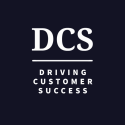Reorienting the Value Chain for the Age of the Customer

Industry advisor Geoffrey Moore’s strategies for building and transforming companies in an age of disruption were birthed as technology was beginning its reign, with “Crossing the Chasm” first published back in 1991 followed by “Zone to Win” in 2015. After years of innovation and a global pandemic, the management strategies Moore posited still remain playbooks for organizations looking to launch, grow and catch their next waves.
Now that we’ve entered the age of the customer, businesses must flip the traditional value chain on its head. Naturally, organizational guru Moore has ideas on how companies can successfully traverse this transformation. Moore is set to break down this new model before senior customer success leaders when they come together in Carmel, California at Totango’s Global Executive Forum, which takes place March 14 to March 16 and is part of the Totango Customer Success Summit series. Click here to register for the event.
Power Rests With the People
There’s no denying there are still companies trying to sell us what we don’t want, but the move from the industrial product era to digital services has created a considerable shift in the relationship between customer and supplier. Customers don’t just want products and services faster and better: they expect it.
“The power shifted,” Moore acknowledges. “It wasn’t just that information power went to the customer, but as the customer, I can unsubscribe or attrit out. Investors love the annuity business model because it’s much more predictable than the lumpy sales model we had before…but only if you keep your customer base loyal.”
While branding remains important, this shift is about actually keeping customers satisfied and engaged while using products and services so they continue using them; and that’s why companies are beginning to reorient the value chain and change the way they innovate.
“Historically, we always built the value chain so that you started with technology, built the product, marketed the product, sold the product, implemented it, provided support, and then value realization was something that happened in the customers’ world,” Moore sets up. “We’re now using that same value chain back to front, so the future is about going backward. Now you have to start with the value realization objective and work back through the customer experience, the implementation experience, and so forth.”

Obviously, it’s good business to recognize the demand and then fill it instead of guessing what your customers want. That doesn’t mean, however, that this is an easy transformation for an organization to make.
“The challenge is that Customer Success (CS) – which used to be called customer support, customer service, or even tech support – has traditionally been a junior function,” explains Moore. “It was an afterthought and basically, it was a technical job. If the product worked, you were done. If not, you opened a case in your support system and when the product worked correctly, you were done. The fact that the customer got no value? Not your problem.
“Well, in a subscription economy, that’s a big problem,” he continues. “If they get no value, they’re not going to re-up. So retention, attrition and net retention score become the health score of the business model.”
As companies begin to embrace a new model in which customer relationships and customer health are paramount, technology and automation become our most powerful tools.
“We used to visit the customer and you had a pal who gave you the scoop, but a lot of times you just got the general picture, and at no point did you get anything but history,” Moore reminds. “With telemetry and log files, we can start to get signals of adoption and defection behavior. Totango and the whole category of CS are about setting up as much signal detection capability as we can.”
With strong CS technology and automation, companies can not only monitor customer behavior but also take proactive measures before it’s too late. Companies that aren’t set up for this remain in a reactionary state, forever chasing the customer and the sale.
Making the Shift to Produce Better Customer Success Outcomes
Even as the implications of the pandemic continue to unfurl, this transformative period has catapulted CS from the hand of early adopters into a much wider market. However, as noted in Moore’s book “Zone to Win,” no business wants to be in the transformation zone. The organizational theorist even compares this challenging zone to heart surgery.
With the understanding that embracing CS and shifting your focus will not be easy, Moore shares the following Customer Success Maturity Model, along with a plea that companies give themselves time to iterate and learn as they traverse each step.

This new age of the customer is being shaped by exciting technology innovations that have transformed how companies operate and redefined the meaning of customer value in every industry. Couple this with the impact of the COVID-19 pandemic and this new reality has significantly increased the importance of thoughtfully and intelligently managing the customer success maturity model. Businesses of all sizes increasingly rely on Totango to help them achieve revenue growth goals as this era takes shape.
-Tim Harnett
Click here to register for Totango’s Global Executive Forum, taking place March 14–16.
Original post here.

Hakan Ozturk
Founder, theCScafe.com, #1 Weekly Customer Success Newsletter
Hakan Ozturk is a Paris-based Customer Success leader with over 15 years of experience in the computer software industry. Passionate about driving growth and delivering value to strategic customers, Hakan has established himself as a trusted industry expert. As the Founder of The Customer Success Café Newsletter and TopCSjobs.com, Hakan provides valuable industry insights and daily-updated job opportunities worldwide in the field of Customer Success. Connect with Hakan to boost your career in CS and your company’s potential for massive growth.

Leave a Reply